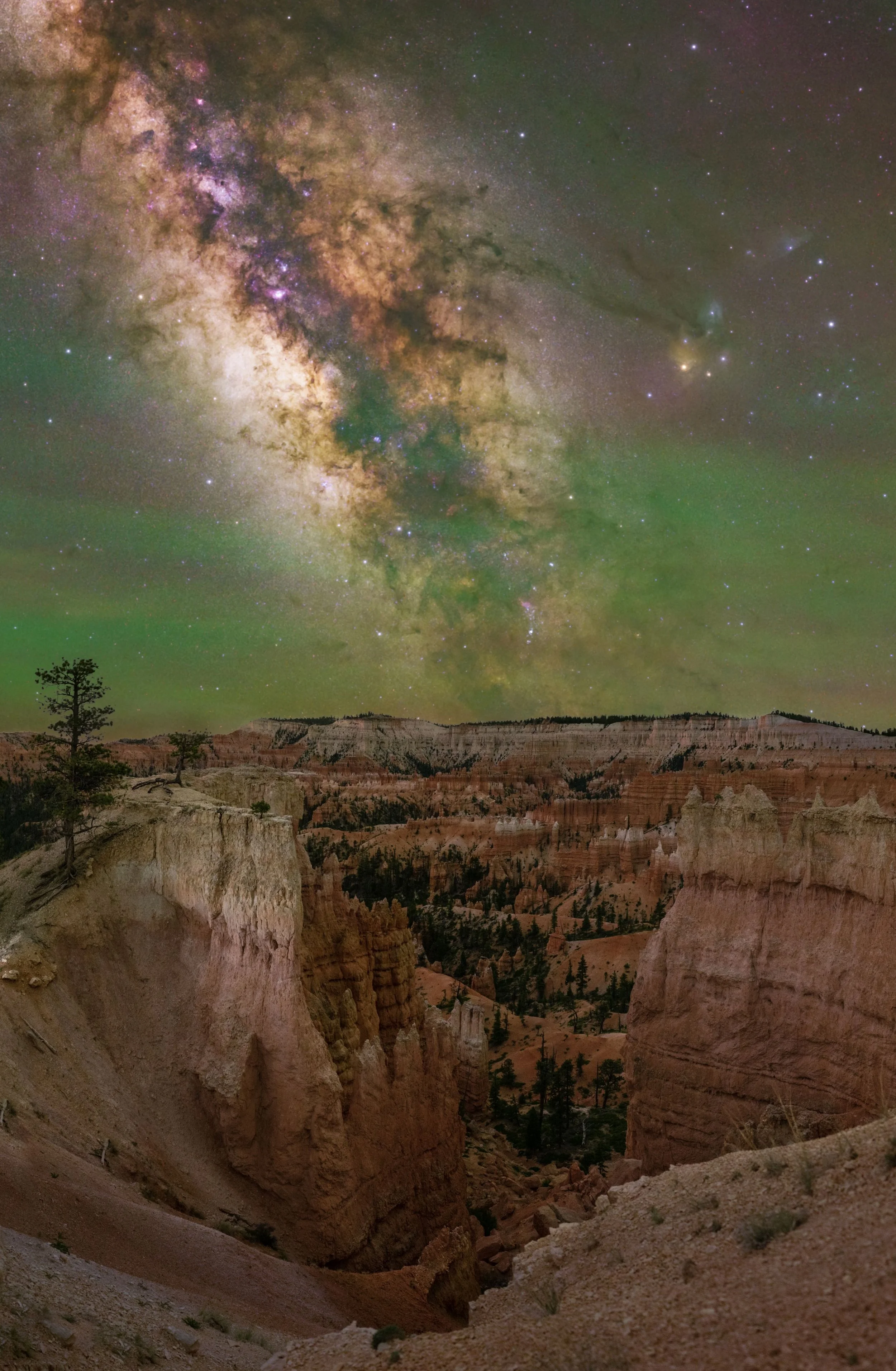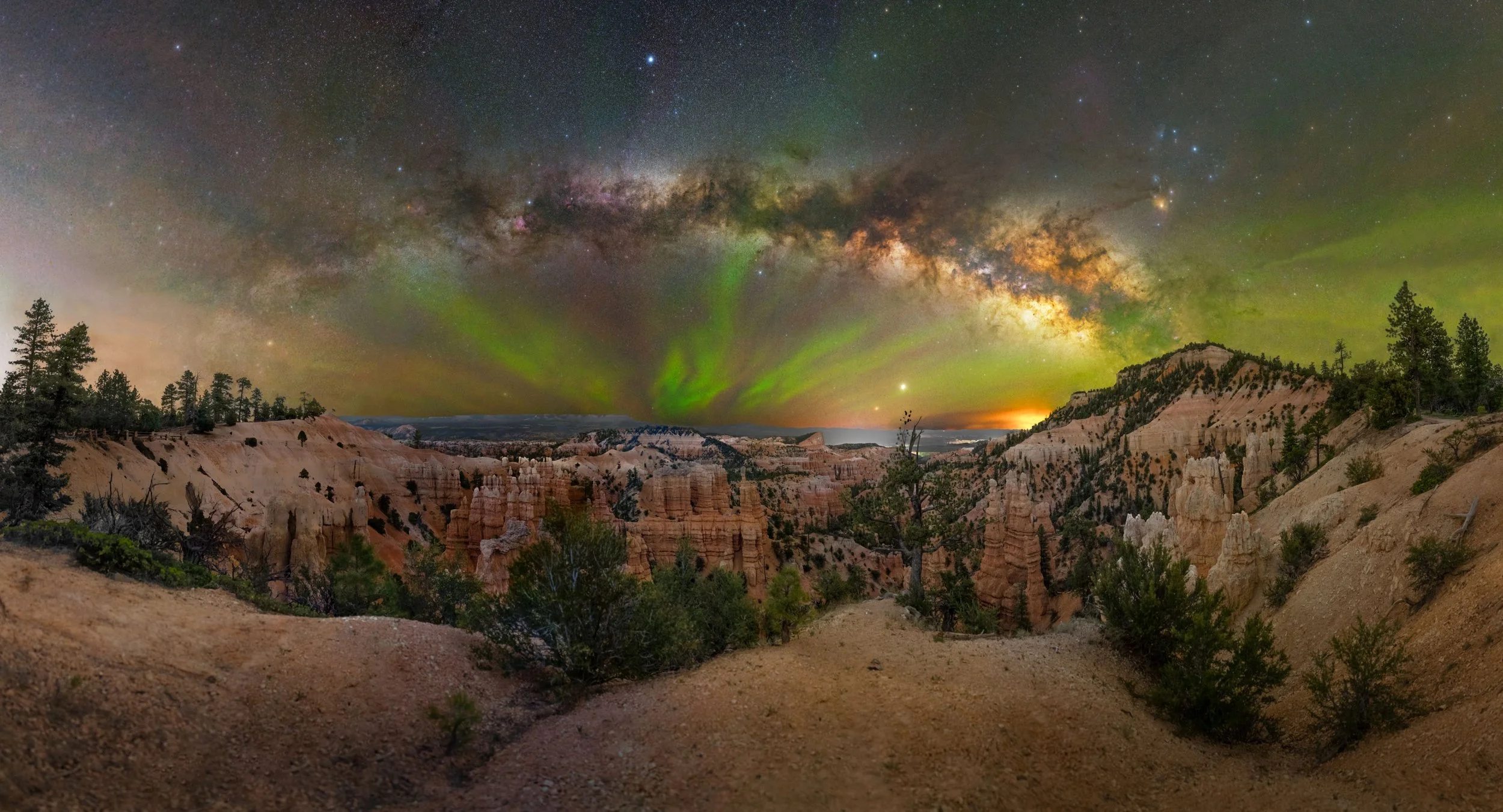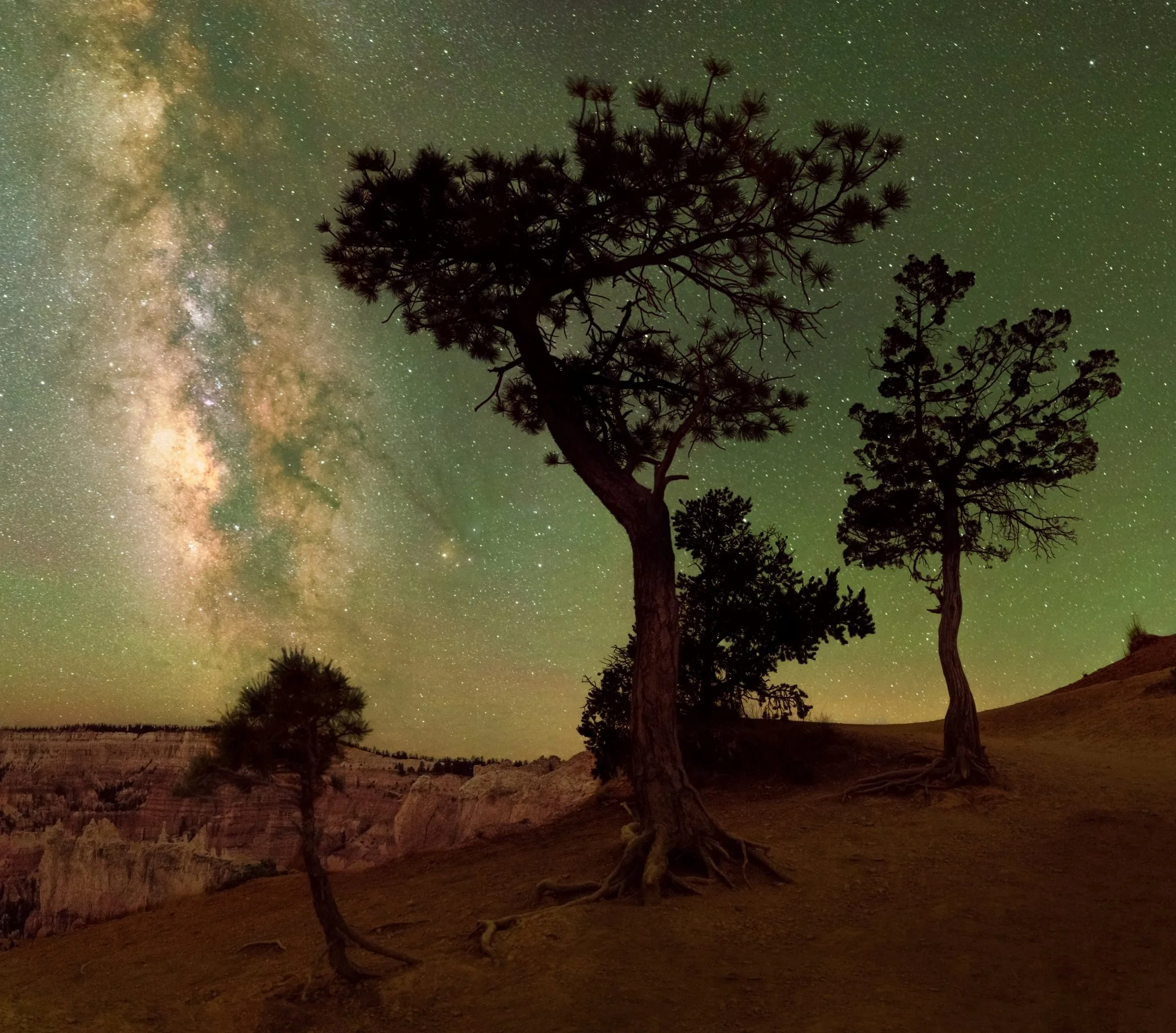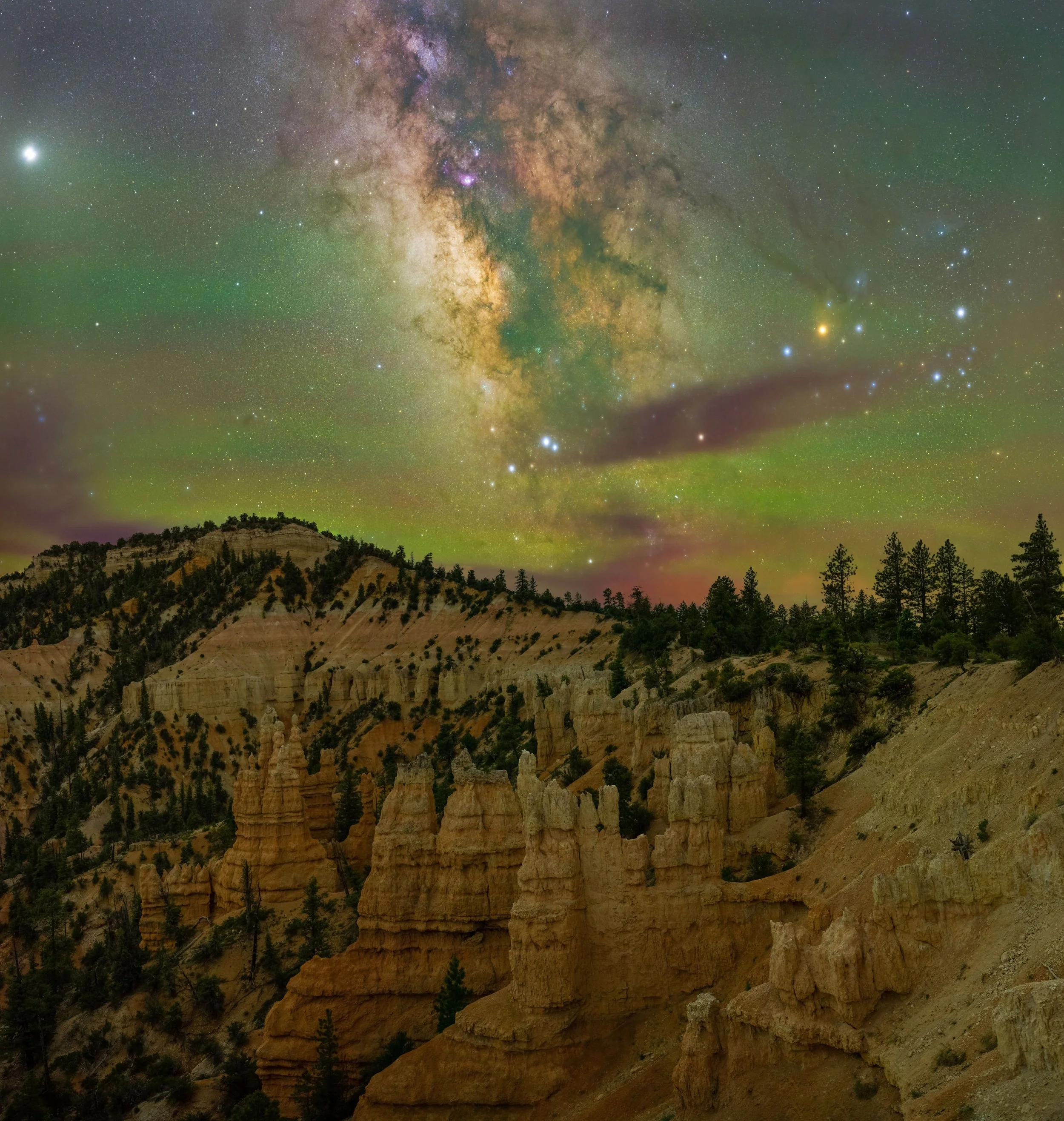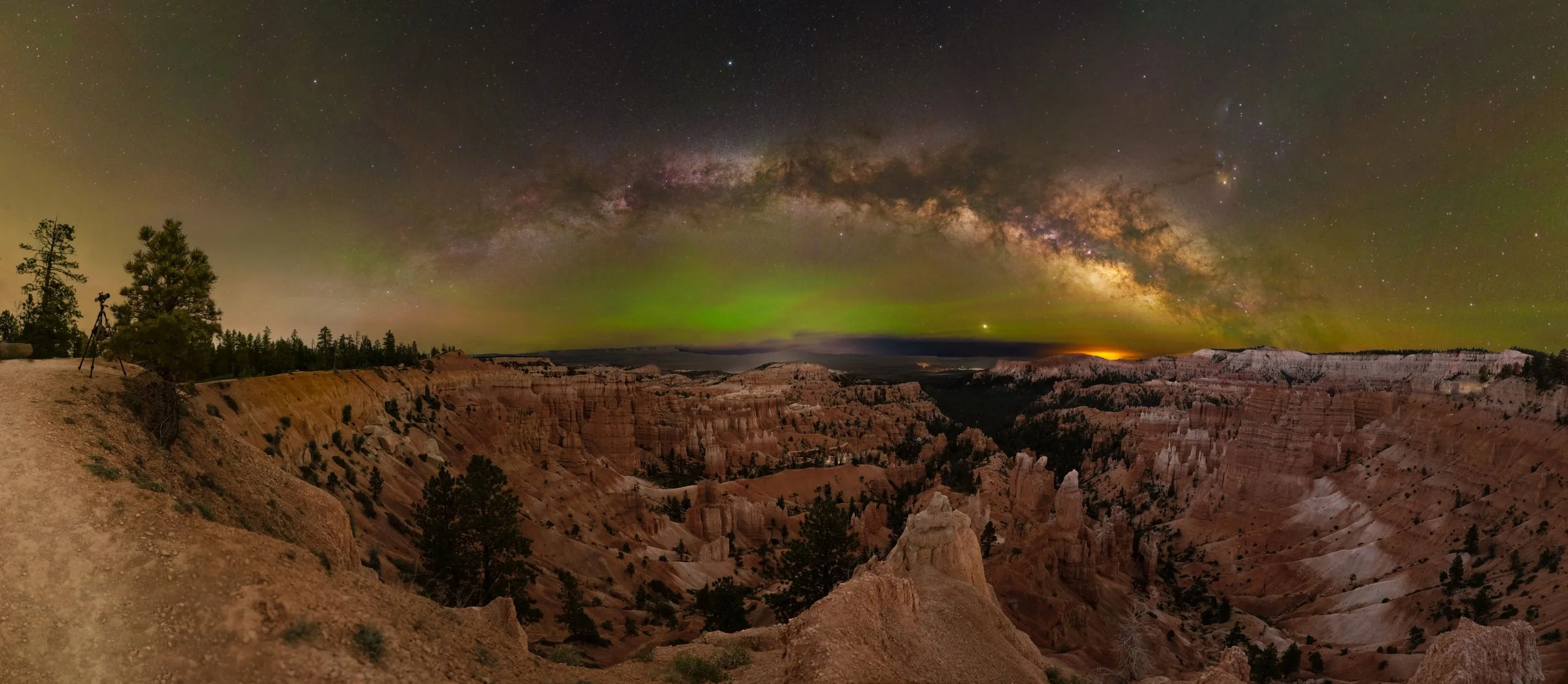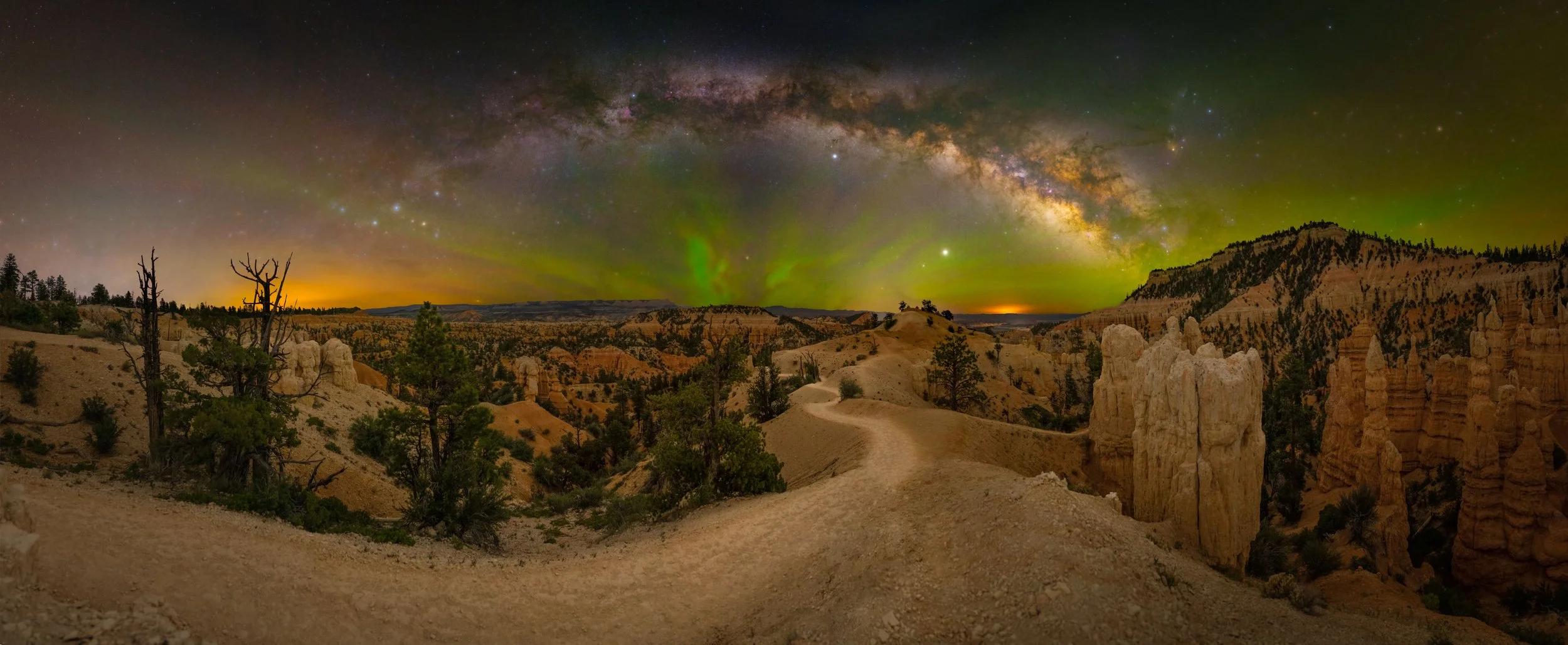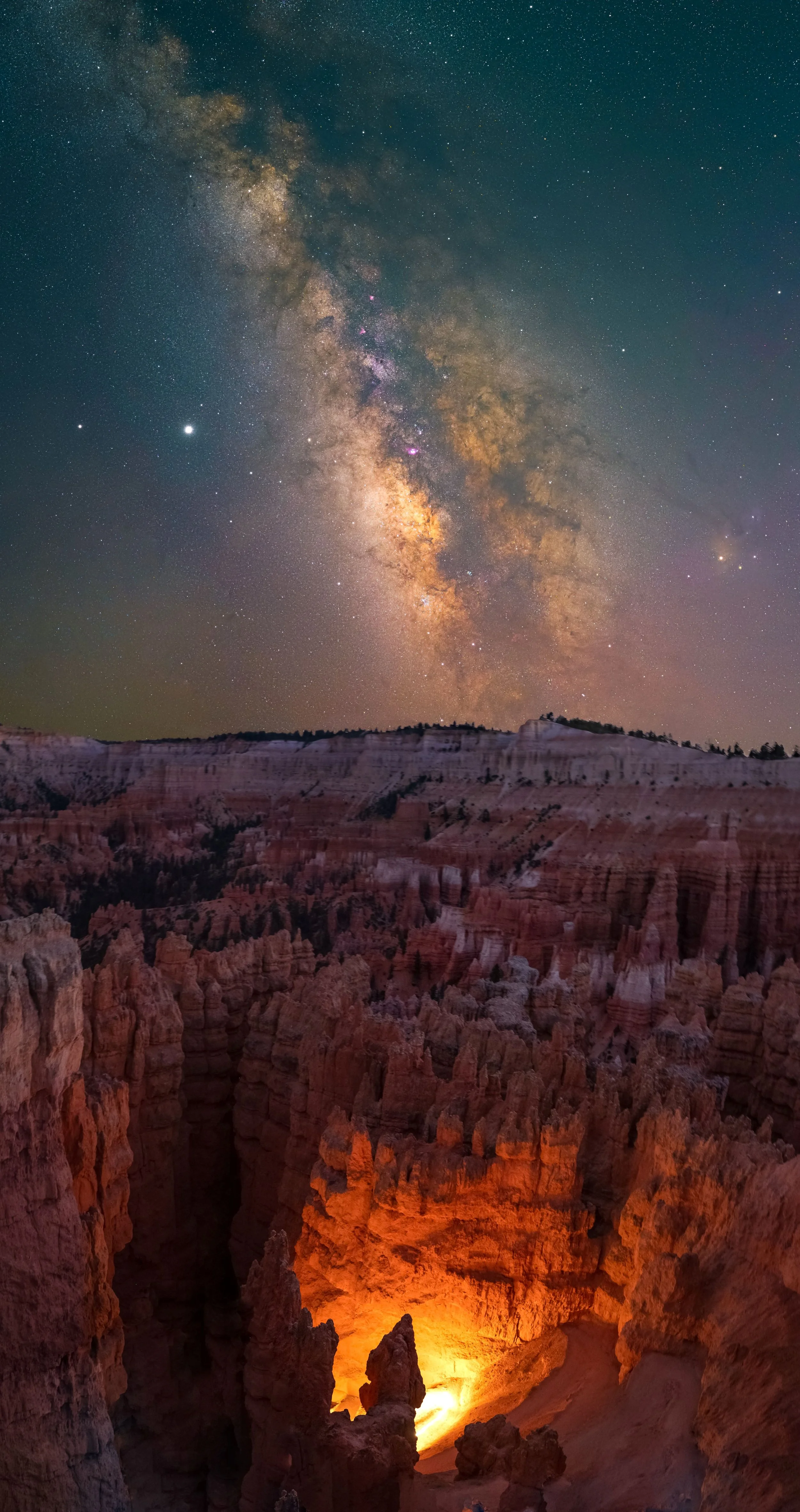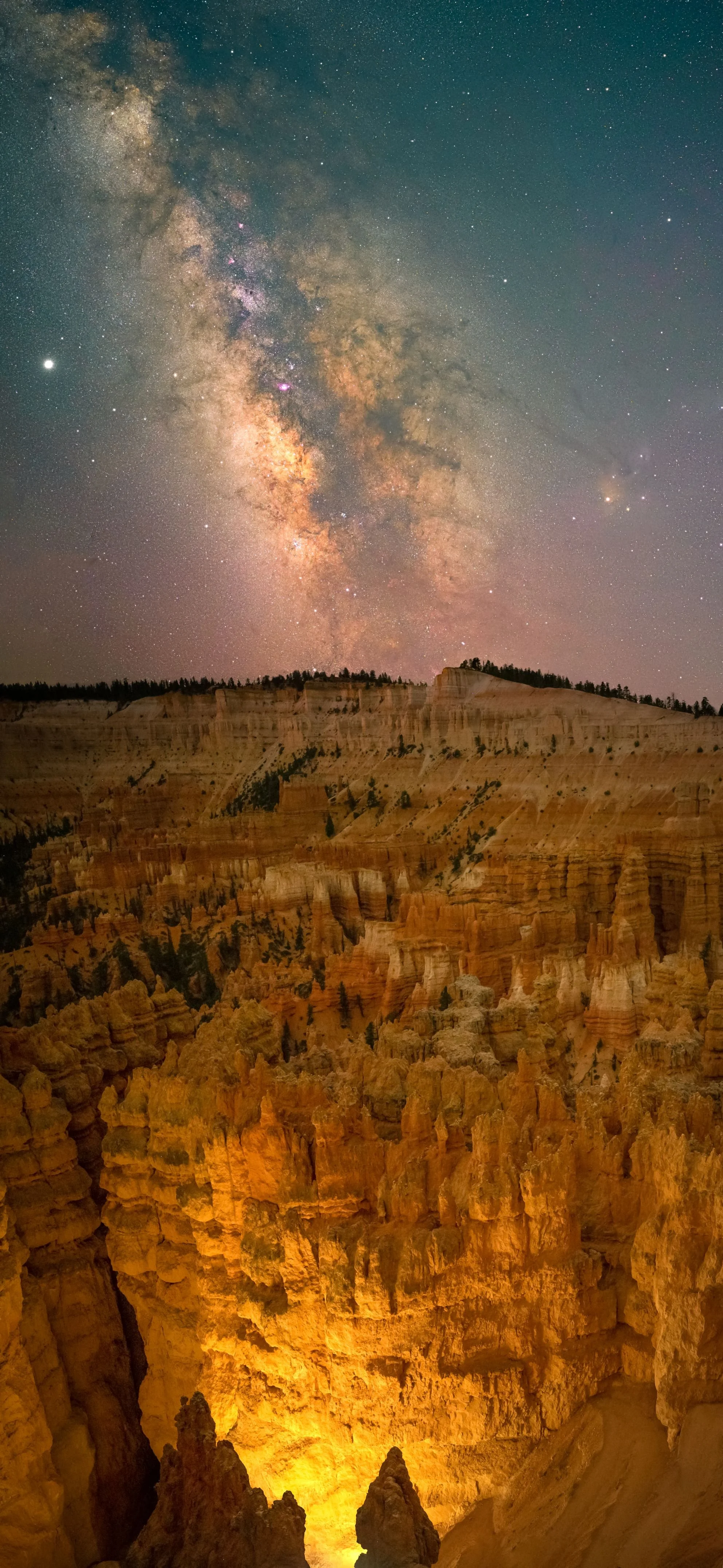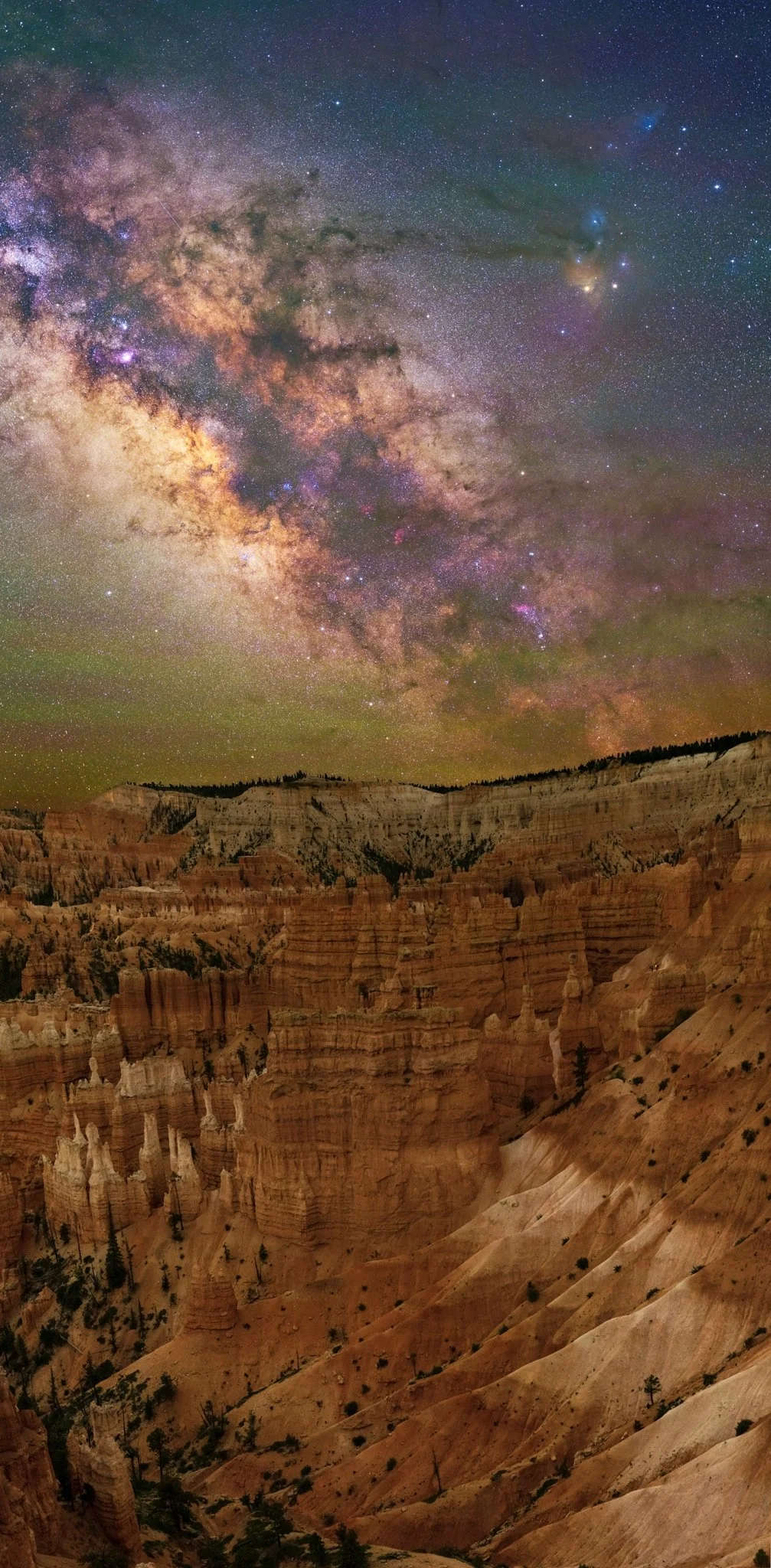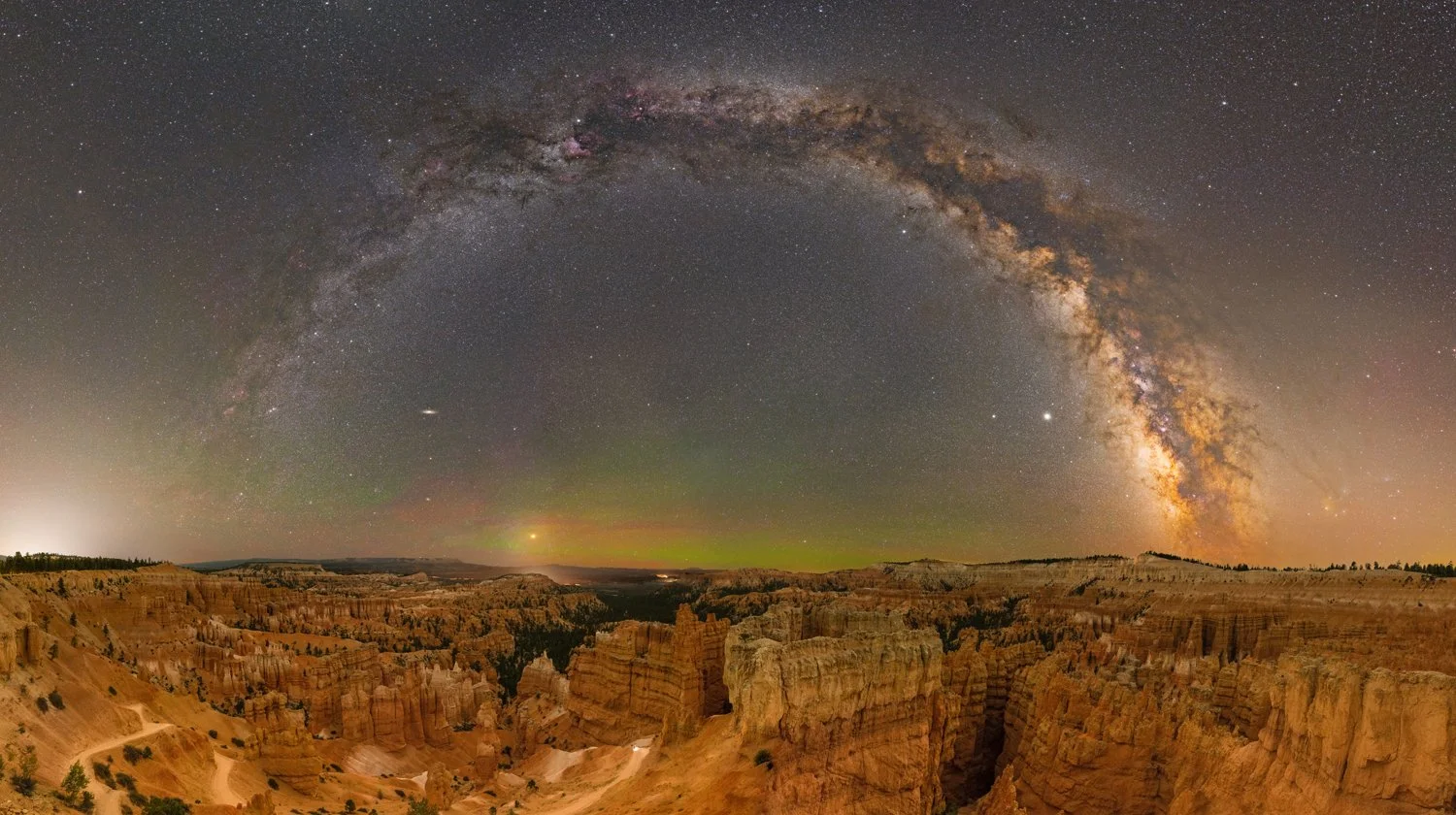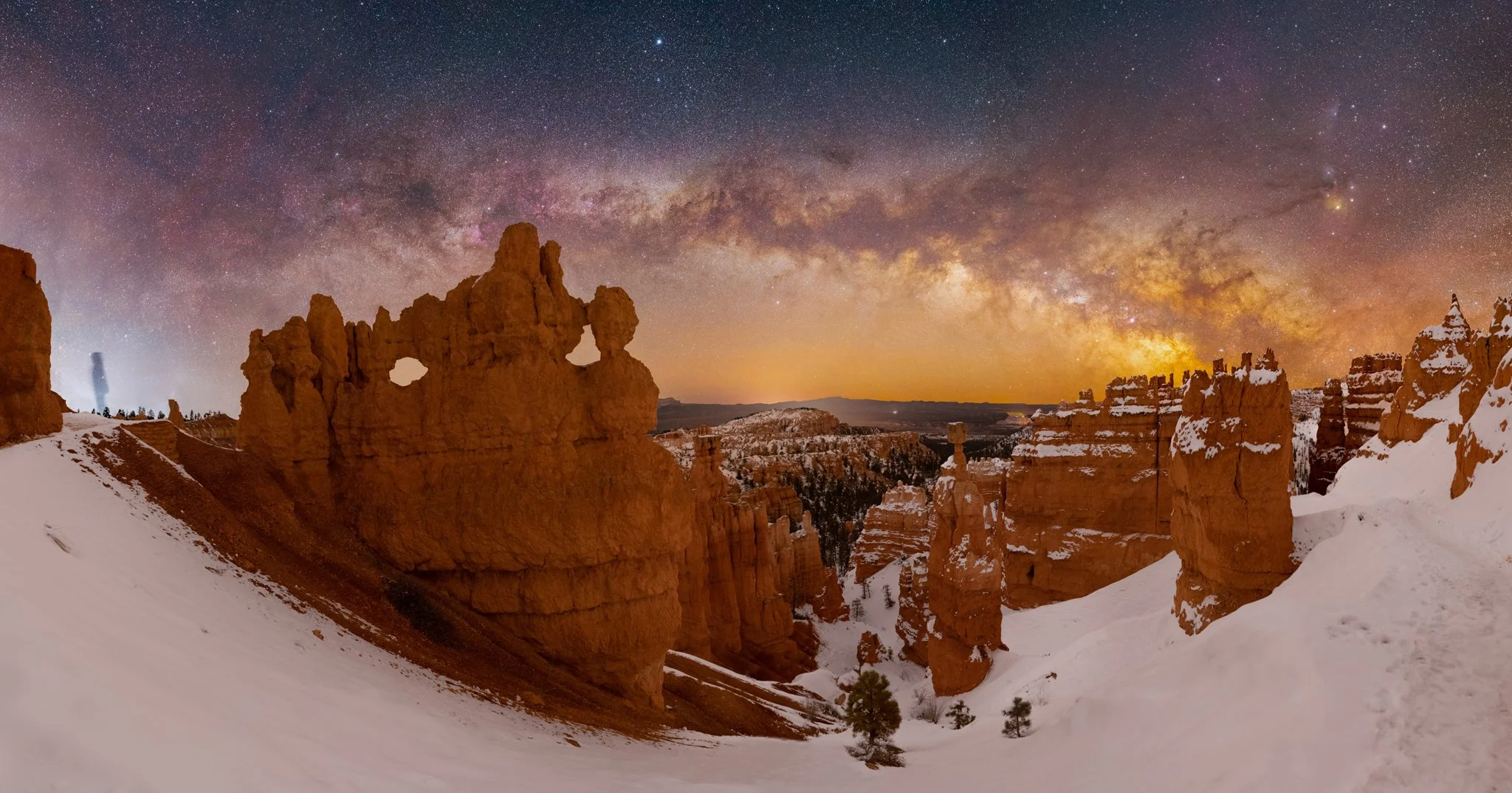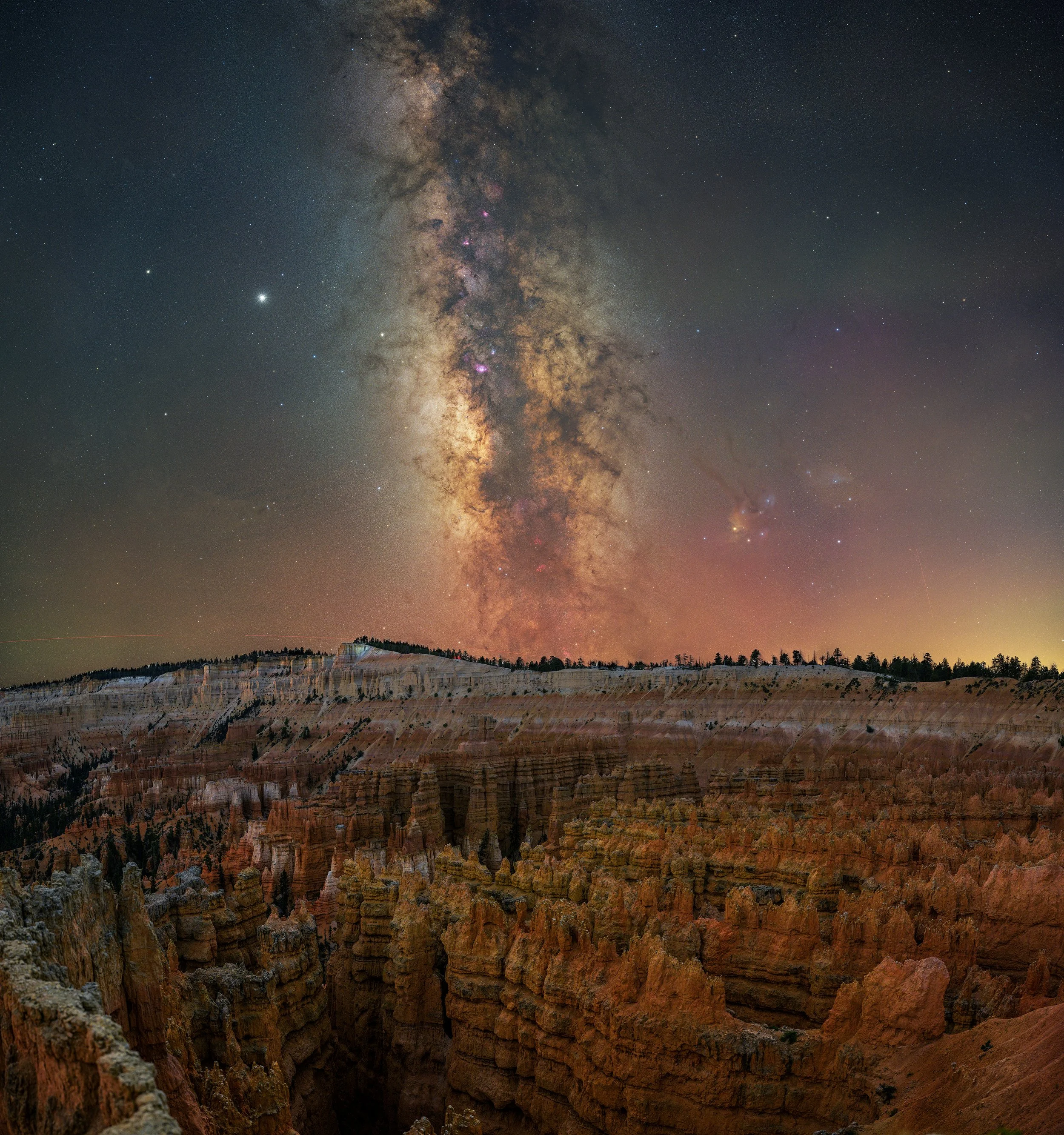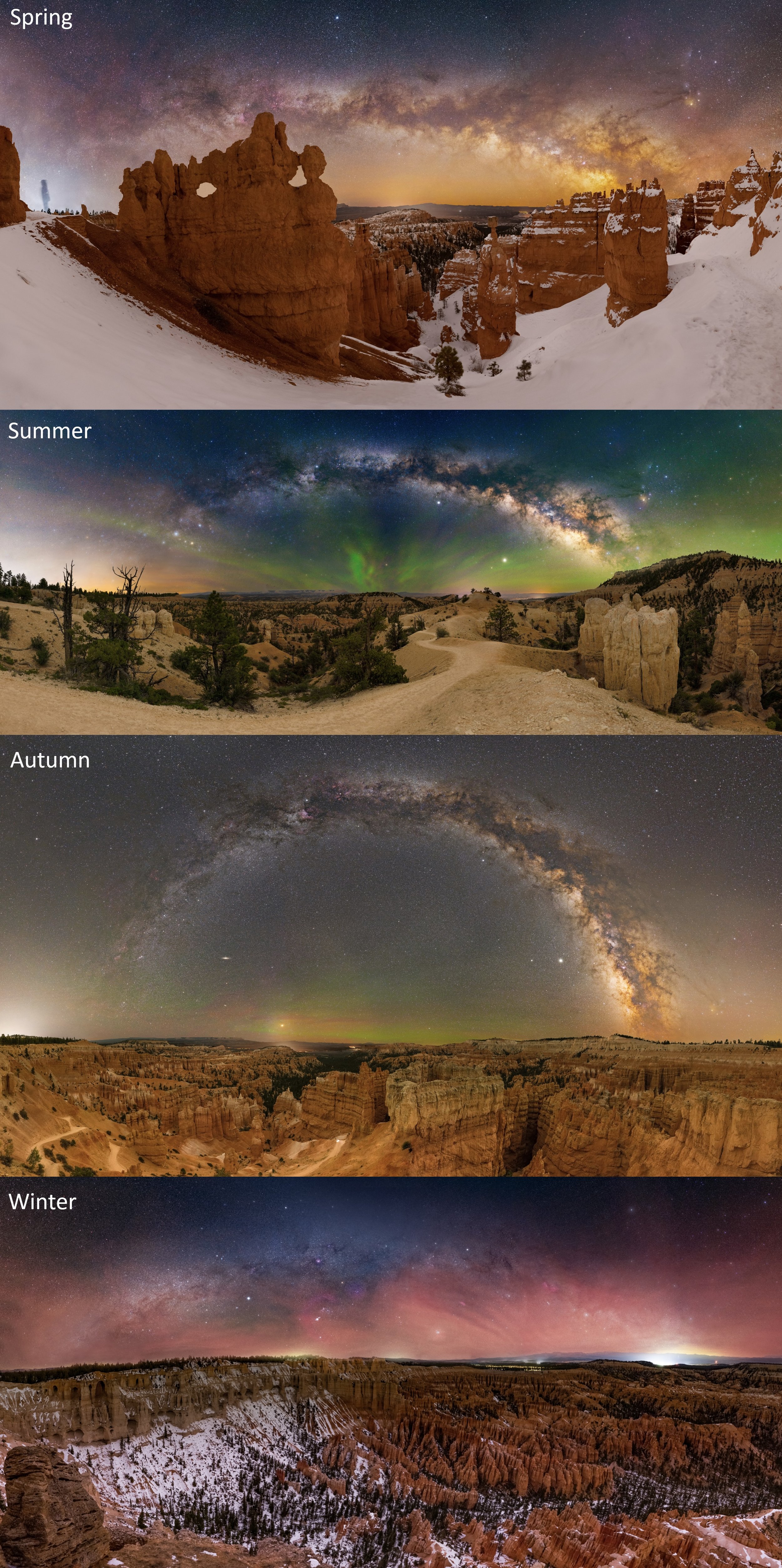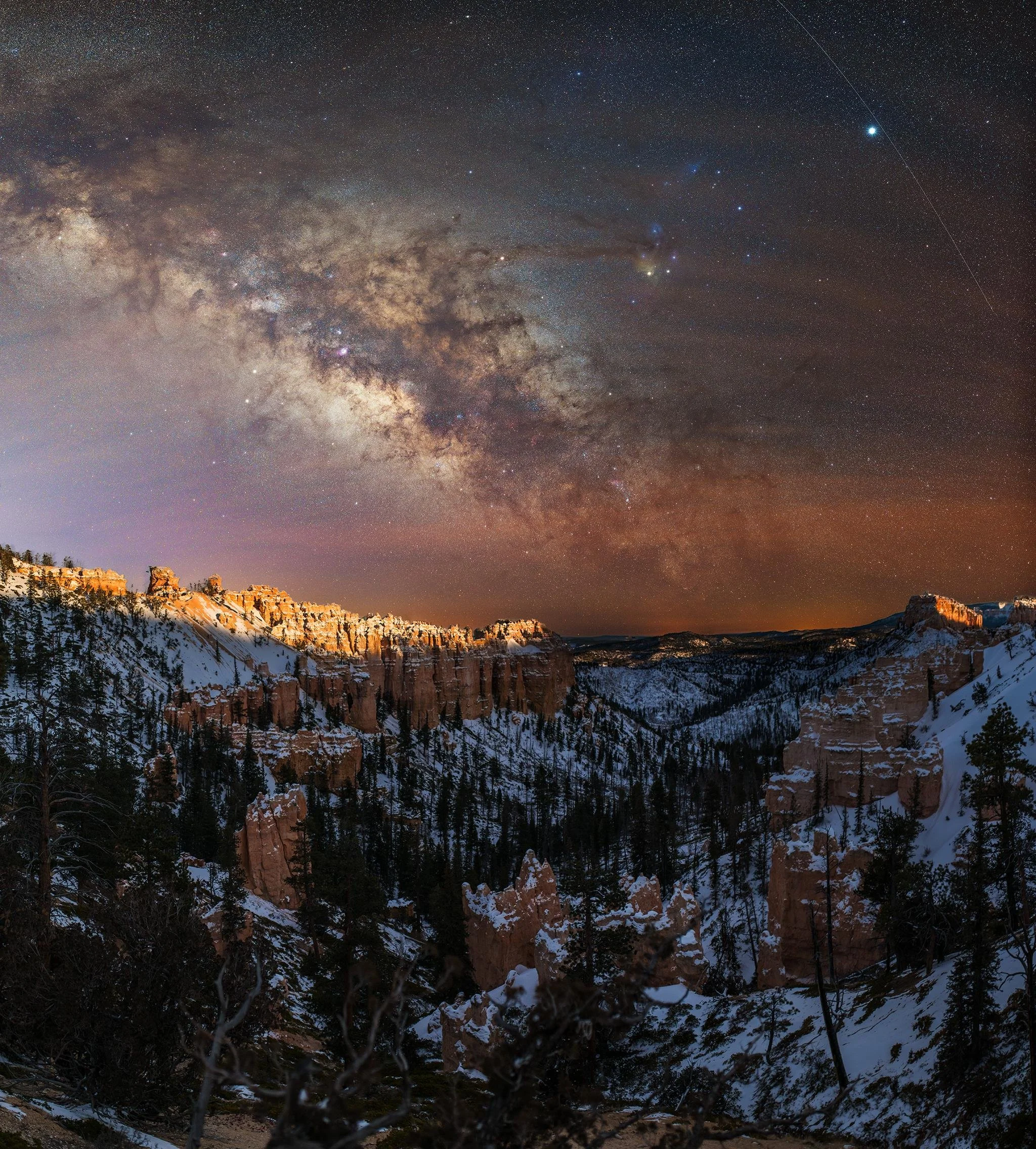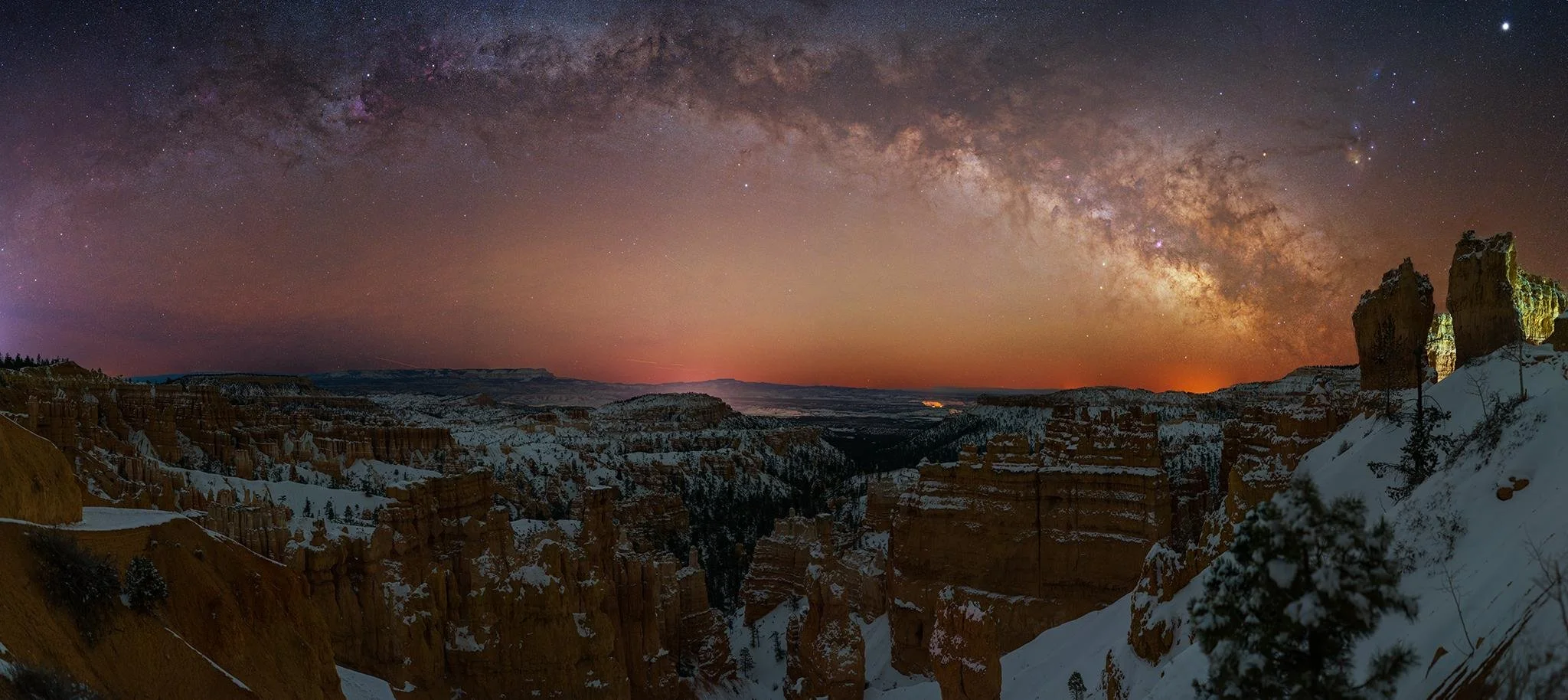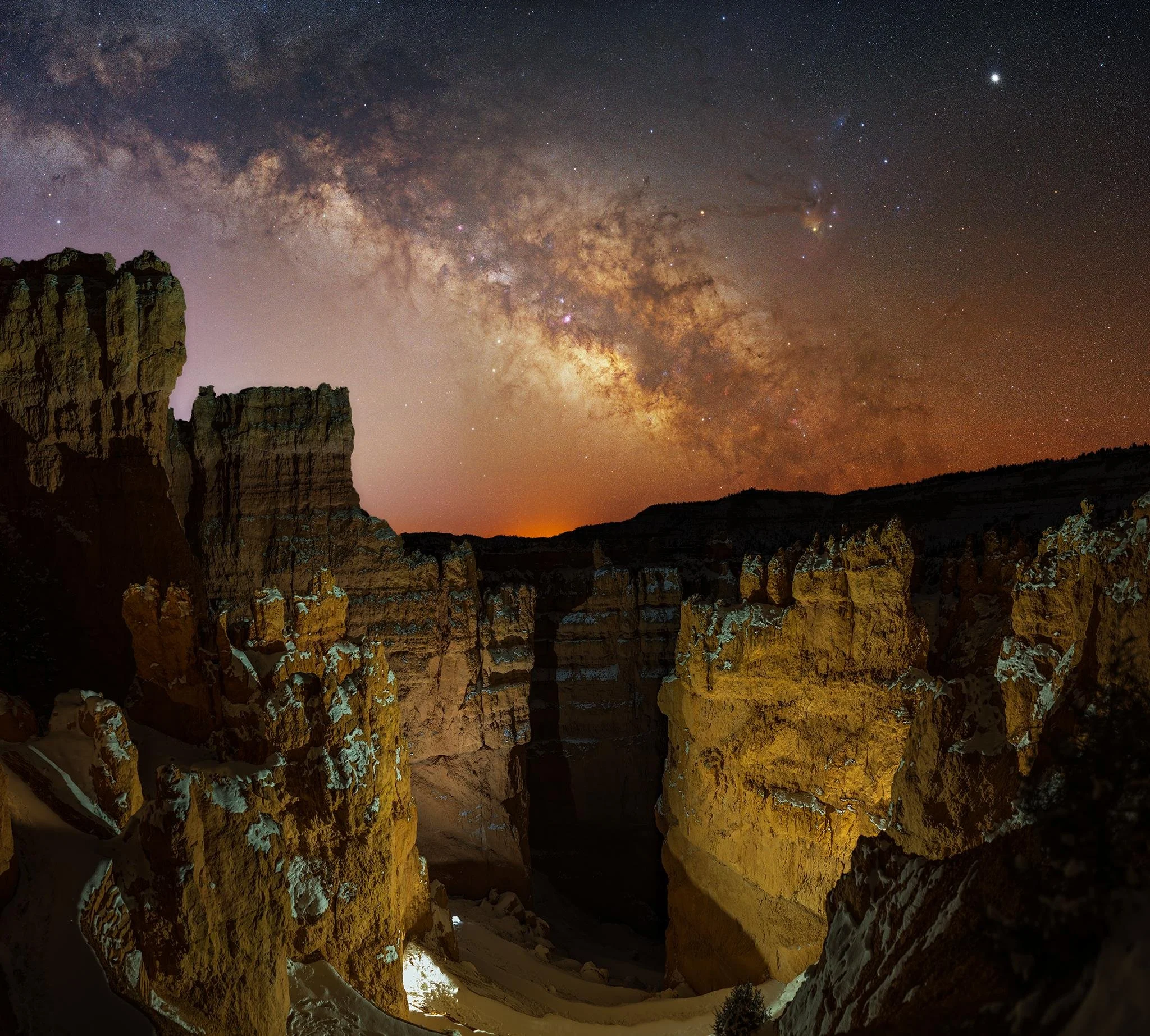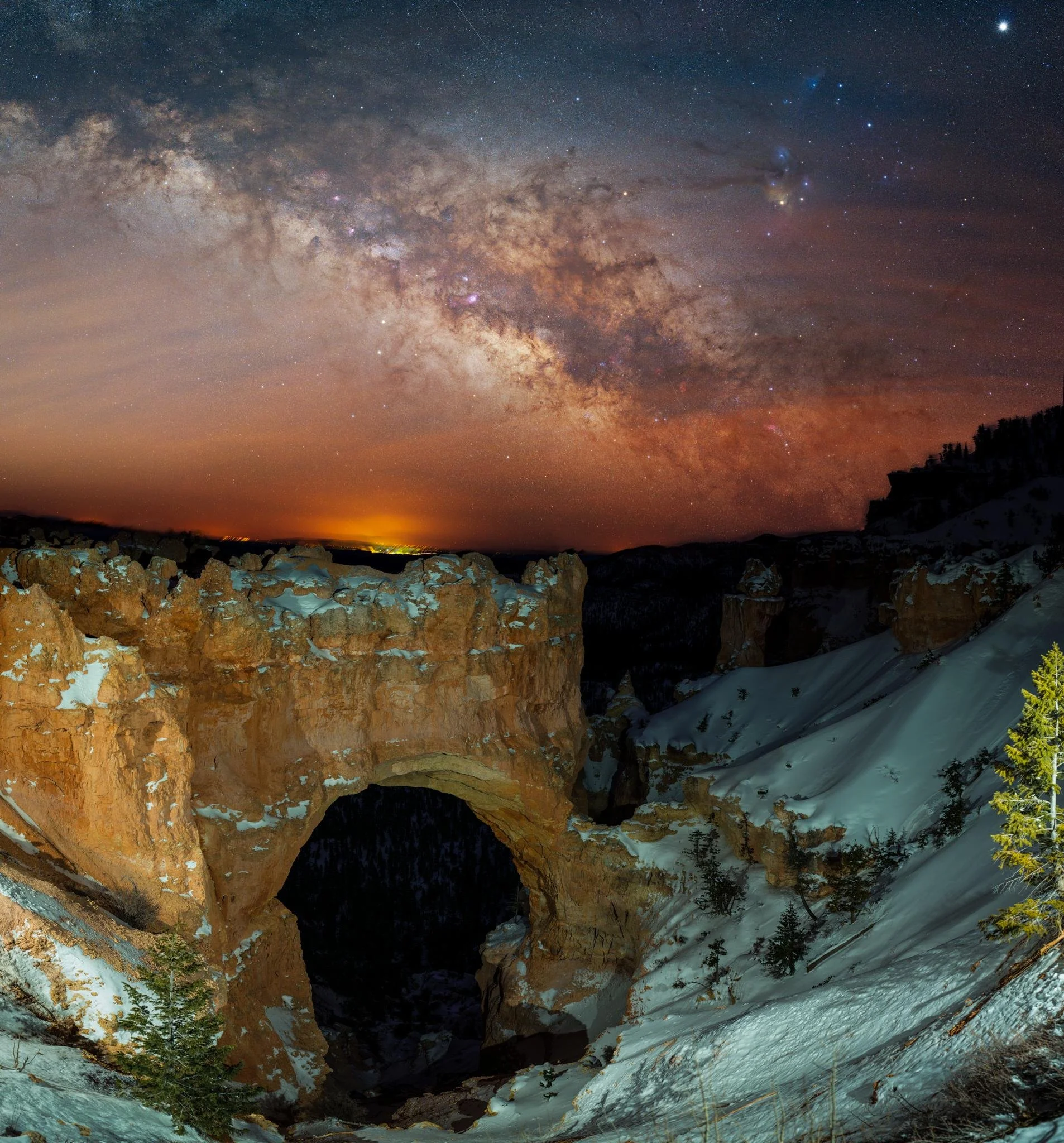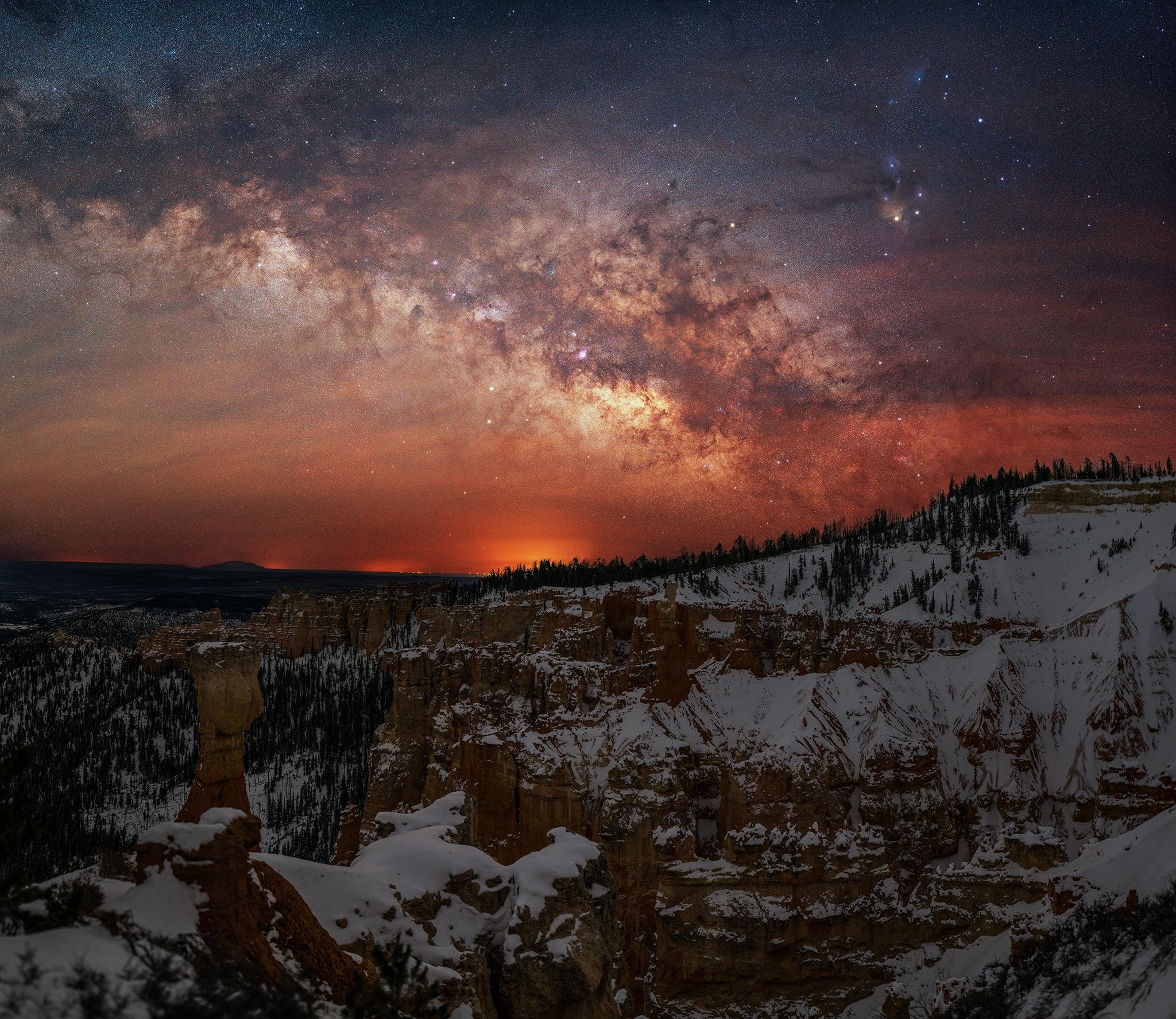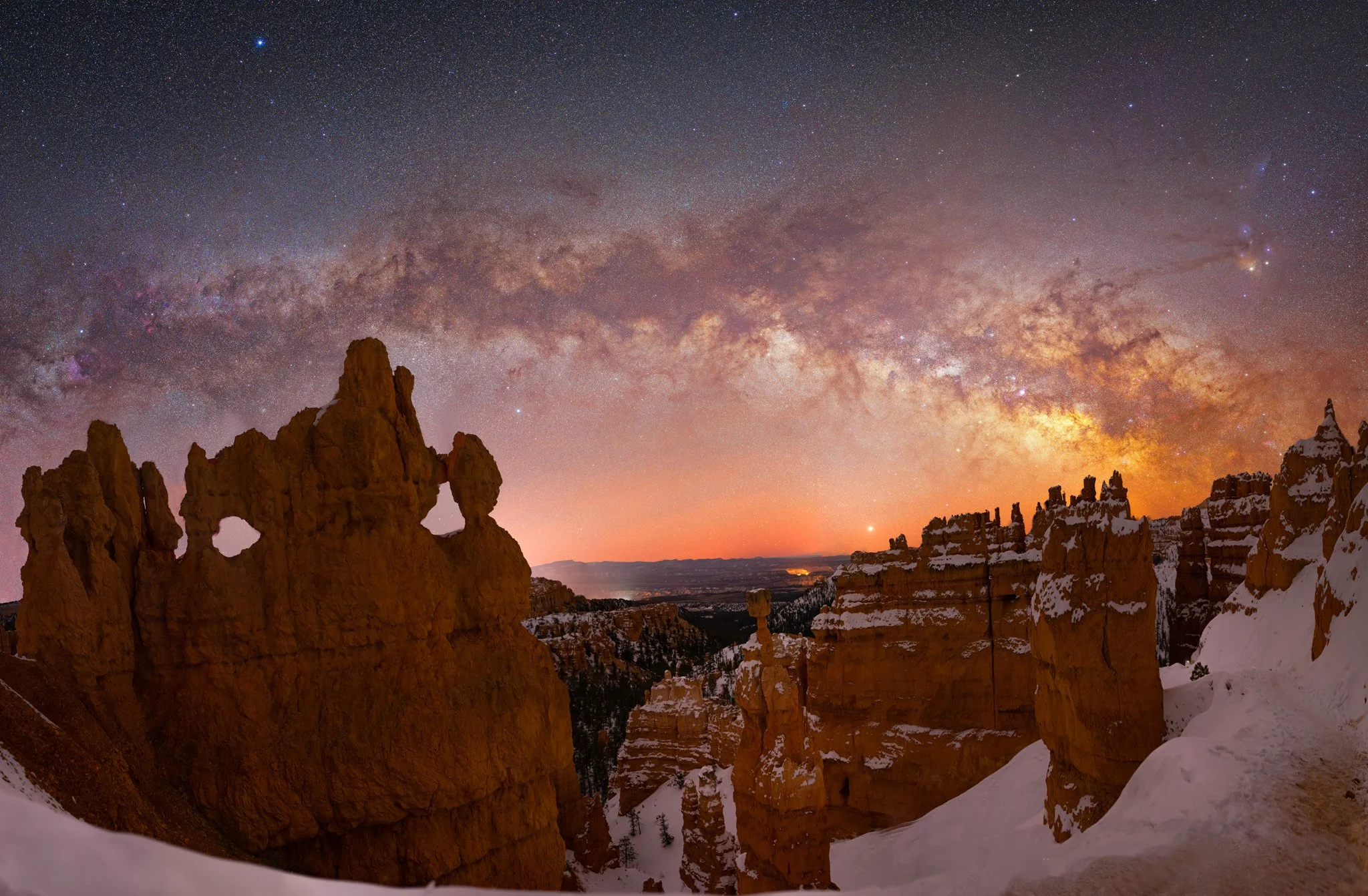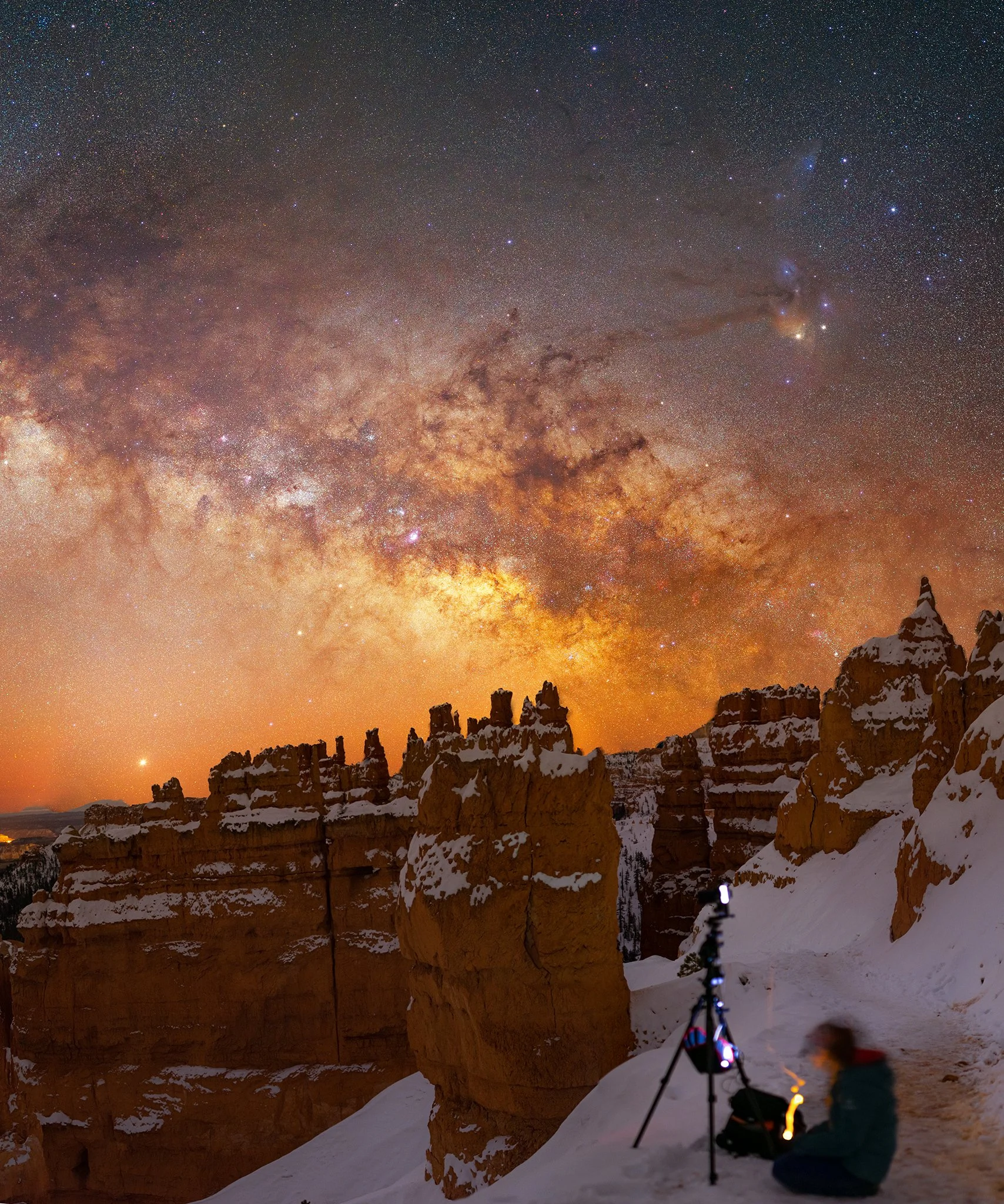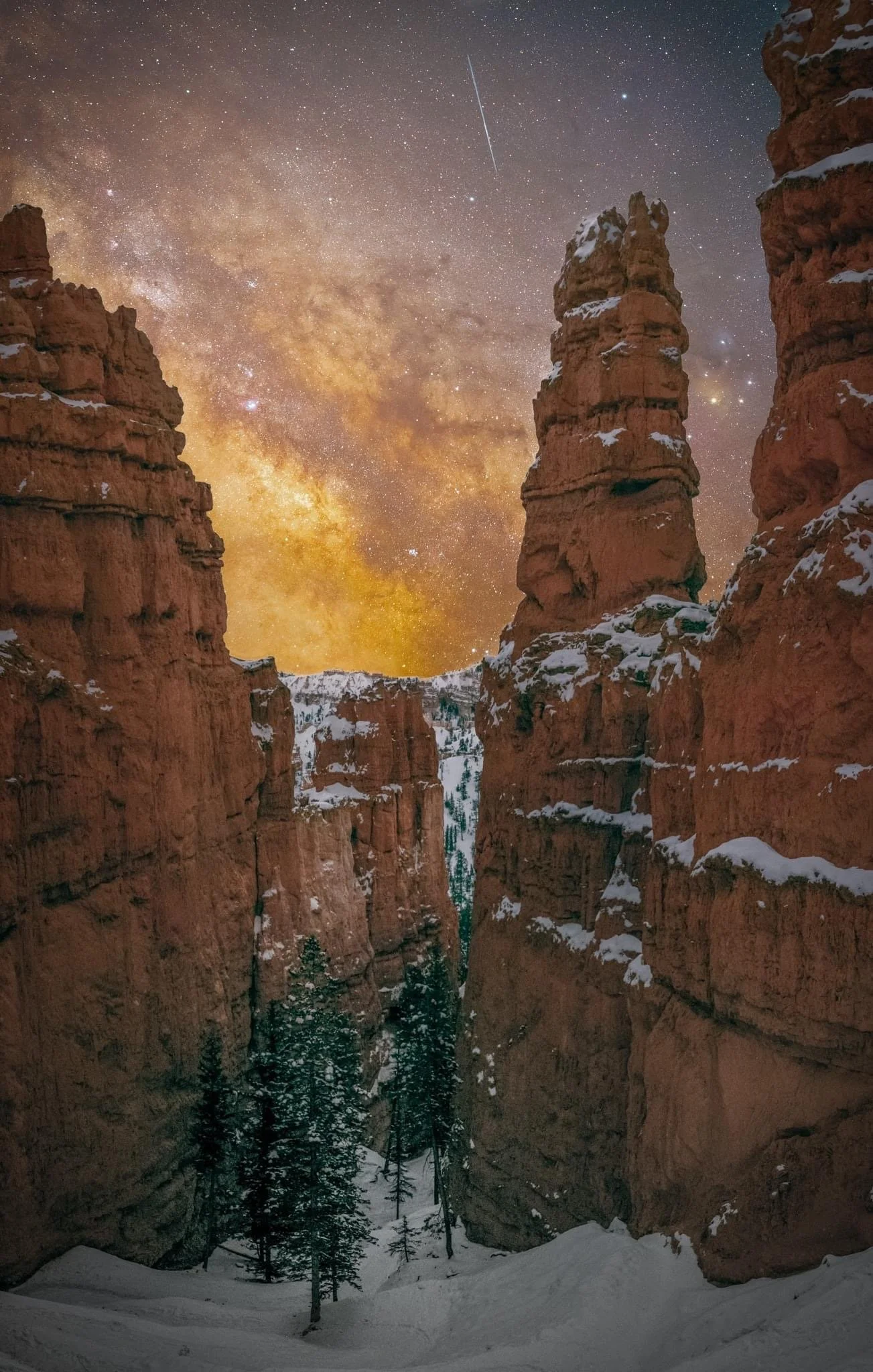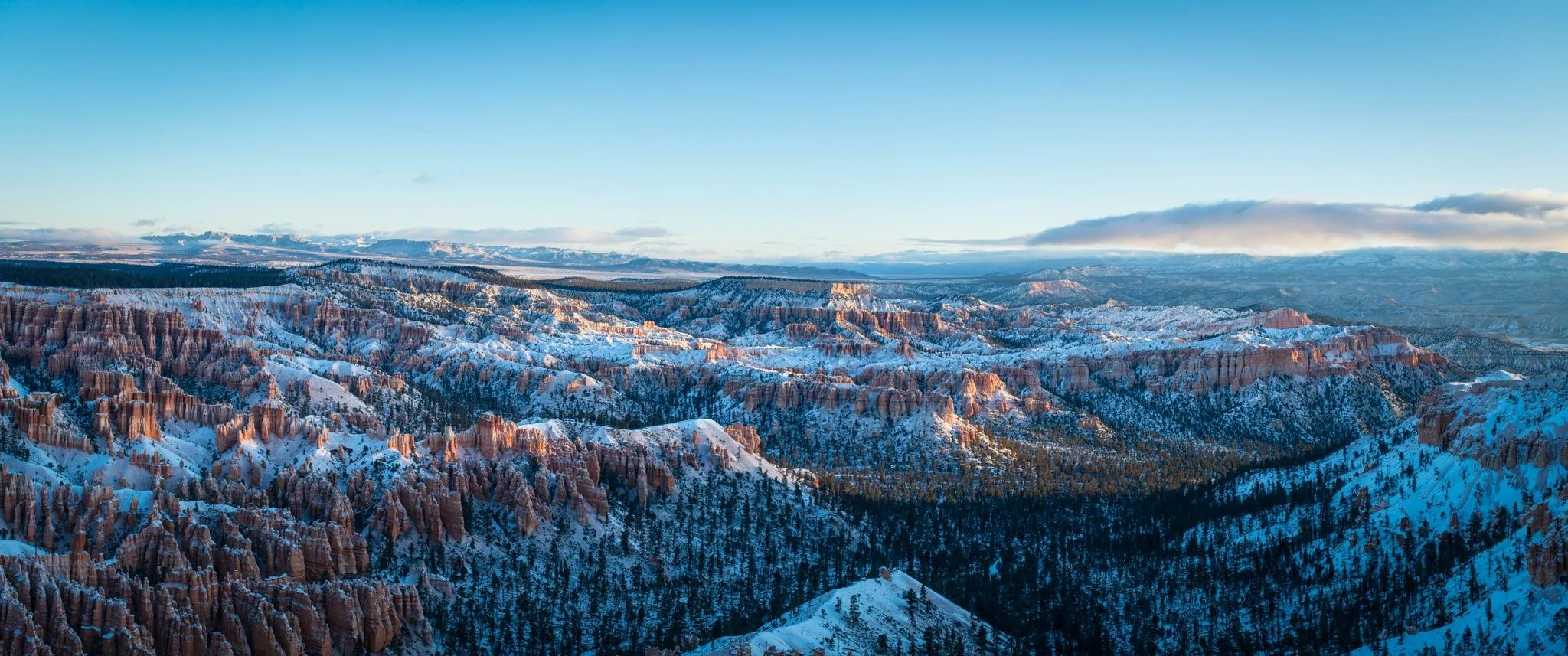
BRYCE CANYON
Bryce Canyon National Park, located in southwestern Utah, is renowned for its unique geological features and extraordinary natural beauty. Despite its name, it is not a single canyon but a series of natural amphitheaters or bowls, carved into the edge of a high plateau. The most distinctive features of Bryce Canyon are the spire-shaped rock formations known as hoodoos, which are densely packed throughout the park.
GEOLOGICAL FORMATION
The formation of Bryce Canyon’s landscape is a story of deposition, uplift, and erosion spanning millions of years. The rocks at Bryce Canyon are composed of sedimentary layers that were deposited over 200 million years ago when the area was at the bottom of a lake and later near the shore of an ancient sea. These layers include limestone, siltstone, dolomite, and mudstone, each recording different environmental conditions and times.
The creation of the hoodoos and the amphitheaters began around 50-60 million years ago during the uplift of the Colorado Plateau. This uplift caused the region to rise as a whole, without much folding or faulting, elevating the Bryce Canyon area to its current altitude of over 8,000 feet (2,440 meters).
Erosion plays the key role in sculpting Bryce Canyon’s remarkable landscape. The area’s distinct seasonal climate, characterized by over 200 freeze-thaw cycles each year, greatly contributes to the formation of hoodoos. Water seeps into cracks in the rock, freezes, and expands, gradually widening the cracks and causing pieces of rock to break off. Over time, this process has created the park’s intricate landscape of spires, pinnacles, and mazes.
WHAT ARE THE LAYERS IN THE ROCKS?
The park’s geology is visible in its grand natural amphitheaters, where the sequence of rock layers is clearly displayed. From the youngest at the top to the oldest at the bottom, these layers tell a story of changing environments and geological processes. The Claron Formation, from which the hoodoos are carved, is particularly important for understanding the park’s unique features. This formation consists of various types of limestone and siltstone, each contributing to the hoodoos’ resistance to erosion in different ways.
Bry: Fairyland Point, Bryce Canyon, Utah
Bry: Sunset Point, Bryce Canyon, Utah
Bry: Three trees, Bryce Canyon, Utah
Bry: Airglow over Fairyland Trail
Bry: Sunrise Point, Bryce Canyon, Utah
Bry: Fairlyland Trail, Bryce Canyon, Utah
Bry: Wall Street, Bryce Canyon, Utah
Bry: Wall Street, Bryce Canyon, Utah
Bry: Bryce Canyon, Utah
Bry: Autumn Milky Way, Bryce Canyon, Utah
Bry: Winter Milky Way, Bryce Canyon, April
Eric: Milky Way over Bryce Canyon Pinnacles
Bry: Four seasons of Bryce Canyon
Bry: The Milky Way core visible before dawn in February
Eric: Bryce Canyon, Utah
Eric
Eric
Eric: Natural Arch, Bryce Canyon, Utah
Eric
Eric: Panorama over Thor’s Hammer
Eric: Bry freezing and the Milky Way
Bry: Wall Street, Bryce Canyon, Utah

